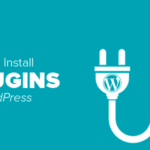If you own a WordPress website, you know that site speed is critical for user experience and search engine rankings. A slow site can drive away visitors and negatively impact your search engine optimization (SEO). Fortunately, there are several ways to optimize your WordPress site for speed. In this post, we’ll cover some of the best practices.
1. Choose a reliable hosting provider
Your hosting provider plays a crucial role in determining your site’s speed. Choose a reliable provider with fast servers, preferably one that specializes in WordPress hosting. A good hosting provider should have a high uptime guarantee, offer CDN integration, and provide advanced caching options.
2. Use a lightweight theme
Your website’s theme is another crucial factor affecting site speed. Choose a lightweight theme that is optimized for speed. A minimalist theme that loads quickly will help you maintain a fast website. Avoid themes that come with many features you don’t need, as these can slow down your site.
3. Optimize images
Images can significantly affect your site speed. Optimize your images by compressing them before uploading to your website. You can use plugins like Smush or ShortPixel to optimize images automatically without affecting their quality.
4. Use a caching plugin
Caching can significantly improve site speed. A caching plugin generates static HTML files for your website, reducing server load and decreasing load times. Popular caching plugins include W3 Total Cache and WP Super Cache.
5. Minimize HTTP requests
Minimizing the number of HTTP requests can also speed up your site. HTTP requests are made every time your browser requests a file from the server. Reducing these requests can help your site load faster. You can do this by combining CSS and JavaScript files, using sprites for images, and reducing the number of plugins you use.
6. Optimize your database
Your website’s database can also affect site speed. Optimize your database by removing unwanted data, such as spam comments and post revisions. You can use plugins like WP-Optimize or WP-DBManager to optimize your database automatically.
In conclusion, optimizing your WordPress site for speed requires several steps. Choosing a reliable hosting provider, using a lightweight theme, optimizing images, using a caching plugin, minimizing HTTP requests, and optimizing your database can all improve your site’s speed. By following these best practices, you can provide a fast and reliable experience for your visitors and improve your SEO.



